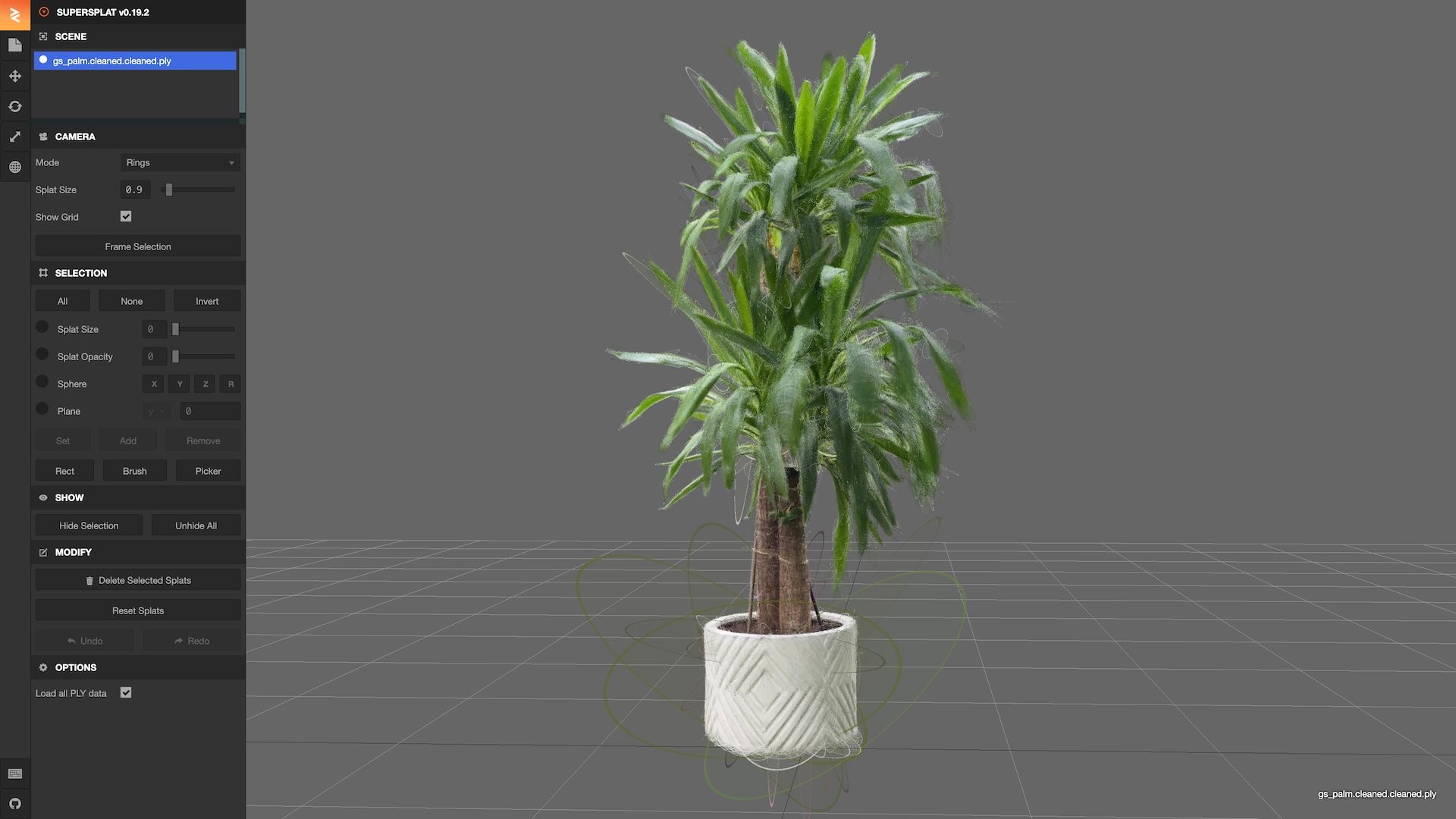3D scans of real world objects.
Jun 7, 2024
by Matas Ubarevicius
Ability to include real world objects into your scenes opens up a lot of new scenarios that we will discuss in this blog post.

Rete editor with gaussian splatting 3D scan of a plant in the CAD vase
Gaussian Splatting
3D Gaussian Splatting is a new innovative technique that allows to create 3D volumetric scans of scenes and objects by using photos taken from different angles. It makes 3D models look smooth and realistic by turning each point into a soft, blended blob. This technique improves the overall visual quality of the model when compared to other, usually more complicated scanning and rasterization techniques.
In the video below we demonstrate several scanned 3D models that you can also find in our Projects section.
Potential Use Cases
While the technique is still relatively new, it has already found its place in various industries. Here are some of the potential use cases for Gaussian Splatting:
Interior Design - you can scan the room in which your designed objects will be placed. This way you can see how your objects will look in the real world and make necessary adjustments before the production starts.
Art - you can scan your art pieces and present them in 3D. This way you can show your art in a new, innovative way and reach a wider audience.
E-Commerce - scan your products and present them in attractive 3D environments for your buyers.
Engineering - let's say you design an alloy wheel and you want to see how it looks like on production car. You can scan your car, remove wheels in the Supersplat editor and place your bitbybit design on it.
We are sure there are more ways how this feature can be important to you.
How To Create And Edit Gaussian Splat
There are few super convenient apps for scanning and creating 3D splats - Luma and Polycam are among the most popular options. You should be able to find these on the App Store and Google Play.
When it comes to editing 3D scans, we found that PlayCanvas web editor called SUPERSPLAT is the easiest to use, works really fast and does a great job in presenting the scans in easy to understand way.

Supersplat editor from PlayCanvas
We strongly advise you to export to binary 'splat' file as it is compatible with our platform and it is lighter in size.
How To Import Gaussian Splat To BITBYBIT.DEV
If you want to use your 3D scan locally without sharing it with others you can follow this guide how to upload the local files to browser memory:
If you have a 3D scan that you would like to upload into BITBYBIT.DEV as a cloud asset you should first subscribe to one of our paid plans. Check that your Splat file size fits the budget of an asset assigned to particular plan. Then you will be able to upload your file as an asset to your projects.
Once you have your asset uploaded you can use 'bitbybit.babylon.gaussianSplatting.create' method in Rete, Blockly or TypeScript. This method expects you to provide the publically accessible URL of an asset that you can copy paste from your asset file or use 'bitbybit.assets.getFile' to load asset by file name directly from our cloud storage, create object url from that file and assign it to gaussian splatting component.
Feel free to check the open-source projects to see how we have implemented this feature in our projects.
